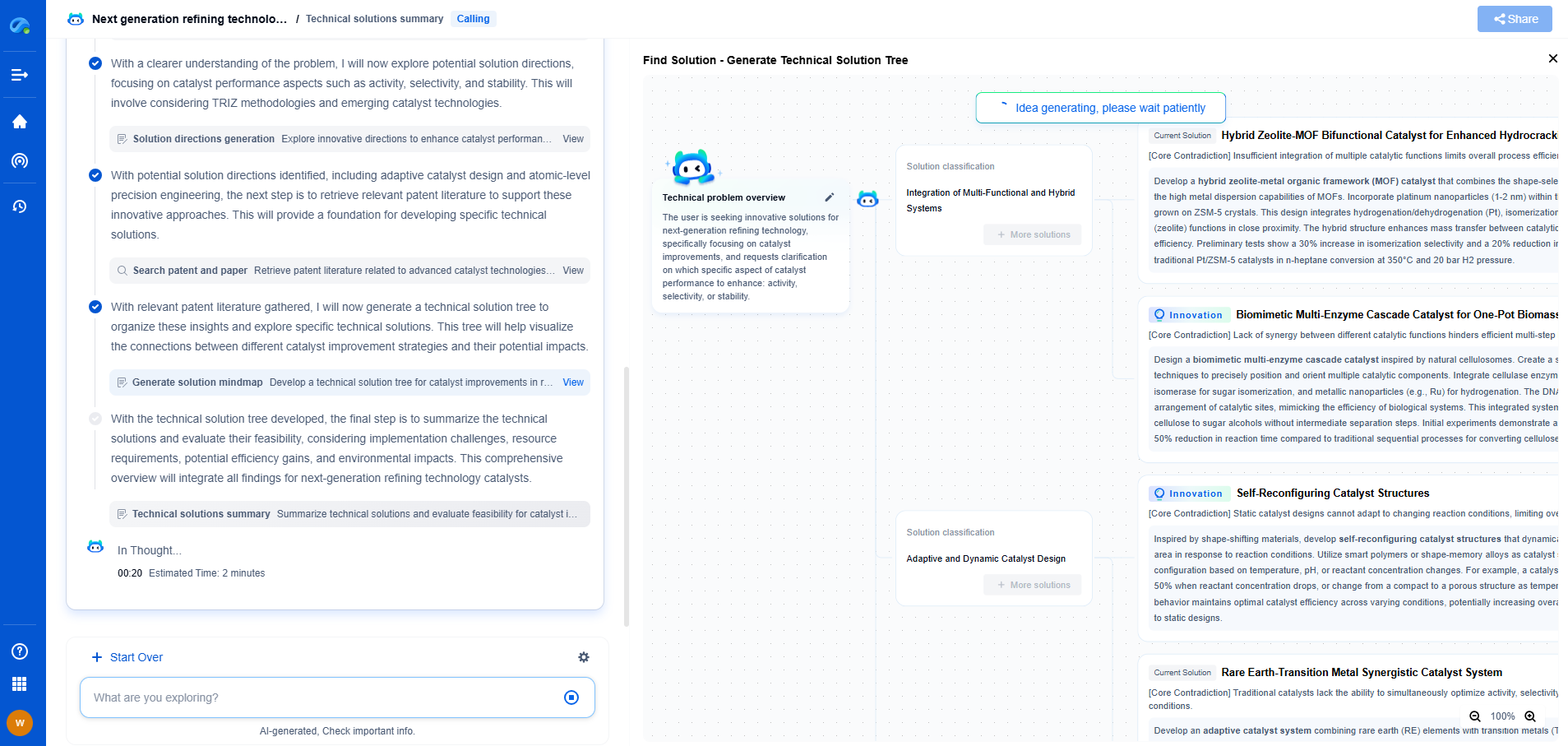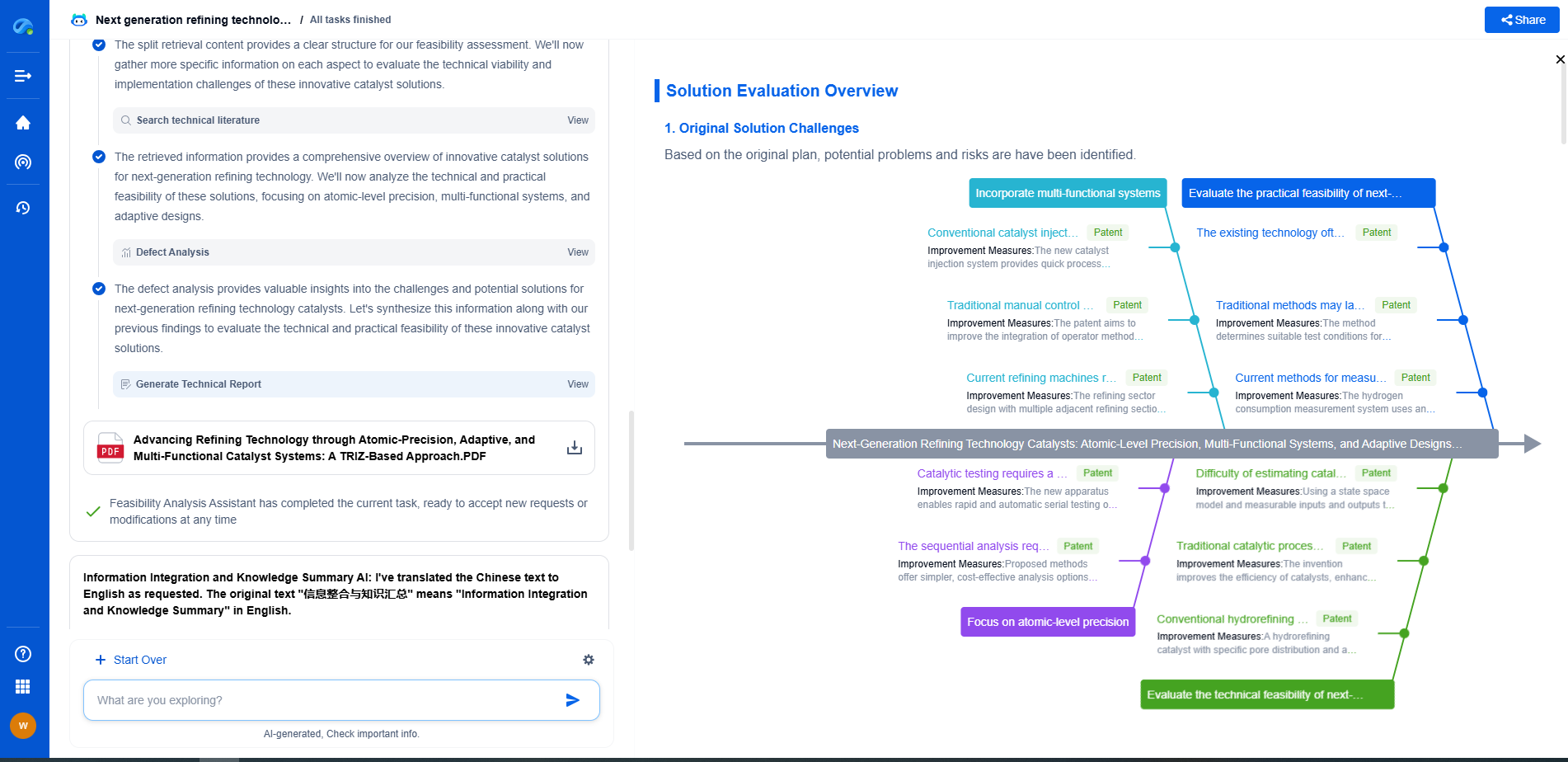Gear mesh simulation vs. physical testing: Pros and cons
JUL 2, 2025 |
When it comes to ensuring the performance and reliability of mechanical systems, gear testing is a critical step that cannot be overlooked. Two primary methods are used in the industry: gear mesh simulation and physical testing. Each approach has its unique advantages and drawbacks, making it essential to thoroughly understand both before deciding which is best suited for a particular application.
Gear Mesh Simulation: The Virtual Approach
Cost Efficiency and Speed
One of the foremost advantages of gear mesh simulation is its cost efficiency. Simulations can be conducted with minimal physical resources, primarily requiring computational power and software licenses. This makes it significantly cheaper than physical testing, particularly in the early stages of product development where numerous iterations might be necessary. Furthermore, simulations can be performed relatively quickly, enabling rapid prototyping and allowing for swift design iterations.
Flexibility and Experimentation
Simulations offer unparalleled flexibility. Engineers can easily tweak various parameters, such as materials, loads, and operating conditions, to observe how these changes affect gear performance. This capability is particularly beneficial when exploring innovative designs or when precise conditions are difficult to replicate physically. Moreover, simulations can also model scenarios that might be too risky or impractical to test physically, such as extreme loads or environmental conditions.
Limitations of Simulations
Despite their advantages, simulations also have notable limitations. The accuracy of a simulation is highly dependent on the quality of the models and the assumptions made, which can sometimes oversimplify complex real-world interactions. This can lead to discrepancies between simulated and actual performance. Simulations also require skilled personnel to interpret the results accurately, which may necessitate additional training or hiring experts, potentially increasing costs.
Physical Testing: The Hands-On Method
Real-World Validation
Physical testing offers the incontrovertible advantage of real-world validation. By testing actual gears under realistic conditions, engineers can observe how gears perform in practice, accounting for factors that computer models might miss. This makes physical testing an essential step in the final stages of product development and quality assurance, ensuring that products meet safety and performance standards before they reach consumers.
Tactile Feedback and Comprehensive Analysis
Physical testing provides tactile feedback that simulations cannot replicate. Engineers can observe not only the functional performance of gears but also detect issues related to noise, vibration, and heat that might not be as apparent in a virtual setting. Additionally, physical testing enables a comprehensive analysis of failure modes, providing insights that are crucial for improving design and materials.
Challenges of Physical Testing
However, physical testing is not without its challenges. It is often time-consuming and expensive due to the need for specialized equipment and facilities. Furthermore, conducting multiple iterations to refine a design can be challenging, as each test requires the production of physical prototypes. This can slow down the development process significantly, especially when extensive modifications are necessary.
Conclusion: Striking a Balance
Ultimately, the choice between gear mesh simulation and physical testing should be guided by the specific needs and constraints of a project. Simulations provide a cost-effective and flexible means to explore various design possibilities rapidly, making them invaluable in the early stages of development. On the other hand, physical testing remains indispensable for final validation, ensuring that gears will perform reliably in real-world applications.
In practice, a combination of both methods often yields the best results. By leveraging the strengths of simulations for initial design and iteration, followed by the confirmatory insights of physical tests, engineers can optimize gear performance while minimizing costs and development time. Achieving this balance is key to advancing the design and production of high-quality mechanical systems.
Boost Innovation in Gears & Transmissions with Patsnap Eureka
Whether you're designing a next-gen planetary gearbox or optimizing gear tooth profiles for noise reduction, keeping up with the fast-evolving landscape of mechanical transmissions requires more than just experience—it takes insight, speed, and smart tools.
Patsnap Eureka, our intelligent AI assistant built for R&D professionals in high-tech sectors, empowers you with real-time expert-level analysis, technology roadmap exploration, and strategic mapping of core patents—all within a seamless, user-friendly interface.
Whether you're streamlining a manual transmission system or exploring electromechanical actuation, Patsnap Eureka helps your team move from concept to novelty faster than ever.
👉 Experience Eureka in action—request a personalized demo today and see how AI can revolutionize your gear innovation workflows.
- R&D
- Intellectual Property
- Life Sciences
- Materials
- Tech Scout
- Unparalleled Data Quality
- Higher Quality Content
- 60% Fewer Hallucinations
Browse by: Latest US Patents, China's latest patents, Technical Efficacy Thesaurus, Application Domain, Technology Topic, Popular Technical Reports.
© 2025 PatSnap. All rights reserved.Legal|Privacy policy|Modern Slavery Act Transparency Statement|Sitemap|About US| Contact US: help@patsnap.com

